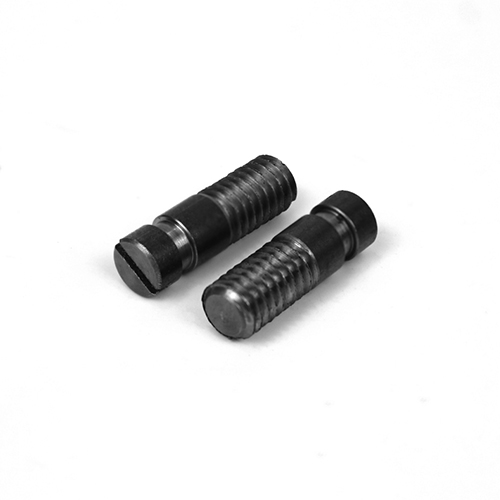CNC Router Tables
Product Overview
In the landscape of digital manufacturing and precision engineering, the CNC router table stands out as a versatile and powerful tool. Used across a wide range of industries—from woodworking and sign-making to aerospace and prototyping—CNC router tables offer precise, automated control over complex cutting, carving, and milling tasks. This article explores the function, benefits, applications, and considerations of using a CNC router table in modern machining.
is a computer-controlled machine that automates the process of cutting and shaping materials such as wood, plastic, foam, aluminum, and composites. It consists of a stationary or moving bed (the table), a spindle or router head that holds the cutting tool, and a control system that directs the movement of the tool based on digital design files (CAD/CAM).
Unlike traditional manual routers, CNC router tables use stepper or servo motors to move the tool along multiple axes (typically X, Y, and Z), allowing for precise, repeatable cuts with minimal human intervention
●Worktable (Bed): The surface where material is clamped or vacuum-held during cutting. Can be fixed or feature a moving gantry.
●Spindle/Router Head: The motorized component that rotates the cutting tool at high speeds.
●Gantry System: Houses the spindle and moves along X and Y axes. Often reinforced for heavy-duty or large-format applications.
●Drive System: Includes ball screws, lead screws, or rack-and-pinion setups that move the axes with high precision.
●Controller and Software: Translates CAD/CAM files into machine instructions (G-code), managing toolpaths and spindle speed.
●Vacuum Table or Clamping Mechanism: Secures the material in place for accurate cutting.
1. Precision and Consistency
CNC router tables can execute detailed cuts and engravings with tolerances as tight as ±0.1 mm, ensuring repeatability across multiple parts.
2. Automation and Efficiency
Once programmed, the router can operate with minimal supervision, reducing labor costs and production time.
3. Material Versatility
These machines can process a broad range of materials:
● Wood (MDF, plywood, hardwood)
● Plastics (acrylic, polycarbonate, PVC)
● Metals (aluminum, brass, soft steels)
● Composites (carbon fiber, fiberglass)
● Foam and other soft materials
4. Complex Geometries
3D contouring, intricate inlays, and sculpted surfaces are easily achievable with CNC router tables, especially those with multi-axis capabilities.
5. Scalability
From one-off prototypes to full production runs, CNC router tables can be adapted to small businesses and large manufacturers alike.
● Sign Making: Precision cutting of letters, logos, and 3D signage from wood, foam, and plastic.
● Cabinetry & Furniture: Intricate joinery, panel cutting, decorative carvings, and moldings.
● Prototyping: Rapid iteration of product designs using low-cost materials.
● Aerospace & Automotive: Lightweight material cutting for parts, molds, and panels.
● Architectural Components: Detailed cutting of facade panels, decorative trims, and ceiling tiles.
● Arts & Crafts: Custom engravings, inlays, and personalized gifts.
● Benchtop Models: Compact and ideal for hobbyists or small shops; limited cutting area but affordable.
● Mid-Size Tables: Suitable for growing businesses, offering a balance of power, size, and price.
● Full-Size Industrial Tables: Built for high-volume production and large-format work; often include advanced features like automatic tool changers and vacuum hold-down systems.
● Multi-Axis Router Tables: Some models offer 4- or 5-axis movement for more complex 3D work and undercut machining.
A CNC router is a game-changer for factories looking to improve precision, efficiency, and product quality. Whether you’re in the woodworking, sign-making, or custom manufacturing industries, the CNC router offers the versatility and automation necessary to take your factory to the next level.
By investing in a CNC router, your factory can streamline operations, reduce costs, and unlock new opportunities for growth and innovation. If you want to stay competitive in today’s fast-paced manufacturing world, a CNC router is the key to achieving lasting success.


We are proud to hold several production certificates for our CNC machining services,which demonstrates our commitment to quality and customer satisfaction.
1、ISO13485:MEDICAL DEVICES QUALITYMANAGEMENT SYSTEM CERTIFICATE
2、ISO9001:QUALITY MANAGEMENT SYSTEMCERTIFICATE
3、IATF16949、AS9100、SGS、CE、CQC、RoHS
Great CNCmachining impressive laser engraving best Ive everseensofar Good quaity overall,and allthe pieces were packed carefully.
Excelente me slento contento me sorprendio la calidad deias plezas un gran trabajo This company does a really nice job on quality.
If there is an issue they are quick to fix itVery good communication and fast responise times.This company always does what I ask.
They even find any errors that we may have made.
We have been dealing with this company for a number of years and have always recelved exemplary service.
I am very pleased with the outstanding quality or mynew parts.The pnce is very competiive and the custo mer service is among the best Ive ever experienced.
Fast tumaround rabulous quality,and some of the best customer service anywhere on Earth.
Q:How accurate is a CNC router table?
A:Accuracy depends on machine build quality, tooling, and setup, but most CNC router tables offer tolerances around ±0.1 mm (0.004 in) or better. Industrial models may provide even higher precision.
Q:Can a CNC router table do 3D carving?
A:Yes. With the appropriate software and tooling, CNC router tables can create 3D reliefs, carvings, and contours, especially on wood, foam, and plastic. Some high-end models even offer 4-axis or 5-axis capabilities for more complex geometries.
Q:What’s the difference between a CNC router and a CNC mill?
A:The main differences are:
● Material Focus: Routers are optimized for softer materials (wood, plastic), while mills handle harder metals.
● Spindle Speed: Routers use higher spindle speeds; mills prioritize torque.
● Construction: CNC mills are more rigid and heavy-duty, while routers are faster and often have larger work areas.













